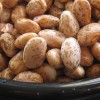 Las legumbres son unos de los alimentos más completos en la naturaleza que proveen una gran variedad de beneficios para la salud. Las legumbres tienen mucha proteína, fibra y vitaminas. También son bajas en grasa, no tienen colesterol y son muy bajas en grasa saturada. Los frijoles oscuros tienen alto contenido de antioxidantes. This 4-page fact sheet was written by Lakshmi Mahan, Lauren Foster y Wendy J. Dahl, and published by the UF Department of Food Science and Human Nutrition, October 2012.
Las legumbres son unos de los alimentos más completos en la naturaleza que proveen una gran variedad de beneficios para la salud. Las legumbres tienen mucha proteína, fibra y vitaminas. También son bajas en grasa, no tienen colesterol y son muy bajas en grasa saturada. Los frijoles oscuros tienen alto contenido de antioxidantes. This 4-page fact sheet was written by Lakshmi Mahan, Lauren Foster y Wendy J. Dahl, and published by the UF Department of Food Science and Human Nutrition, October 2012.
http://edis.ifas.ufl.edu/fs201
Category: Families & Consumers
De compras para la salud: Leche (FSHN1109S/FS200)
 La leche ofrece una variedad de nutrientes esenciales que el cuerpo necesita para mantenerse saludable. Estos nutrientes incluyen el calcio, la vitamina D, la vitamina A y el potasio. La leche también contiene proteína de alta calidad que ayuda a satisfacer las necesidades de su cuerpo. This 4-page fact sheet was written by Wendy J. Dahl and Lauren Foster, and published by the UF Department of Food Science and Human Nutrition, October 2012.
La leche ofrece una variedad de nutrientes esenciales que el cuerpo necesita para mantenerse saludable. Estos nutrientes incluyen el calcio, la vitamina D, la vitamina A y el potasio. La leche también contiene proteína de alta calidad que ayuda a satisfacer las necesidades de su cuerpo. This 4-page fact sheet was written by Wendy J. Dahl and Lauren Foster, and published by the UF Department of Food Science and Human Nutrition, October 2012.
http://edis.ifas.ufl.edu/fs200
De compras para la salud: Yogurt (FSHN1201S/FS198)
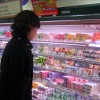 El yogur se ha convertido en un producto muy popular en la dieta de los Estadounidenses y se ha apoderado de la mayoría de la sección de los productos lácteos en muchas tiendas. ¿Alguna vez se ha preguntado qué es el yogur, cuáles son los beneficios para la salud o cuál es la diferencia entre los tipos de yogures? Continúe leyendo para encontrar las respuestas a estas preguntas y para aprender más sobre el yogur.This 3-page fact sheet was written by Stephanie B. Meyer, Ada Medina-Solórzano y Wendy J. Dahl, and published by the UF Department of Food Science and Human Nutrition, October 2012.
El yogur se ha convertido en un producto muy popular en la dieta de los Estadounidenses y se ha apoderado de la mayoría de la sección de los productos lácteos en muchas tiendas. ¿Alguna vez se ha preguntado qué es el yogur, cuáles son los beneficios para la salud o cuál es la diferencia entre los tipos de yogures? Continúe leyendo para encontrar las respuestas a estas preguntas y para aprender más sobre el yogur.This 3-page fact sheet was written by Stephanie B. Meyer, Ada Medina-Solórzano y Wendy J. Dahl, and published by the UF Department of Food Science and Human Nutrition, October 2012.
http://edis.ifas.ufl.edu/fs198
Healthy Eating: Folate (FCS8567/FY066)
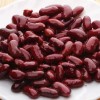 Folate is one of the B vitamins. It is involved in the formation of DNA, the genetic material found in all cells of your body. Folate is an important nutrient for everyone. It is especially important for pregnant and nursing women, growing children, and older adults. Health problems may result if people do not get enough folate. This 2-page fact sheet was written by Linda B. Bobroff, and published by the UF Department of Family Youth and Community Sciences, October 2012.
Folate is one of the B vitamins. It is involved in the formation of DNA, the genetic material found in all cells of your body. Folate is an important nutrient for everyone. It is especially important for pregnant and nursing women, growing children, and older adults. Health problems may result if people do not get enough folate. This 2-page fact sheet was written by Linda B. Bobroff, and published by the UF Department of Family Youth and Community Sciences, October 2012.
http://edis.ifas.ufl.edu/fy066
What Middle Schoolers Want to Talk About (FAR0804/FM246)
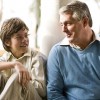 “Can your middle-schooler talk to you? Most 10- to 14-year-olds want a warm, close relationship with their parents. However, only about a quarter of adolescents nationwide find their parents ‘approachable and available to talk.'” This 2-page Family Album Radio transcript was written by Suzanna Smith, and published by the UF Department of Family Youth and Community Sciences, September 2012.
“Can your middle-schooler talk to you? Most 10- to 14-year-olds want a warm, close relationship with their parents. However, only about a quarter of adolescents nationwide find their parents ‘approachable and available to talk.'” This 2-page Family Album Radio transcript was written by Suzanna Smith, and published by the UF Department of Family Youth and Community Sciences, September 2012.
http://edis.ifas.ufl.edu/fm246
Healthy Meal Plans (FCS8750/FY522)
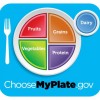 A meal plan is a guide to help you plan daily meals and snacks. It allows you to eat foods you enjoy and that provide a good balance of nutrients for your health. Meal plans can be used by anyone interested in healthy eating. They are very helpful for people who want to manage their weight.This 20-page fact sheet was written by Linda B. Bobroff, and published by the UF Department of Family Youth and Community Sciences, October 2012.
A meal plan is a guide to help you plan daily meals and snacks. It allows you to eat foods you enjoy and that provide a good balance of nutrients for your health. Meal plans can be used by anyone interested in healthy eating. They are very helpful for people who want to manage their weight.This 20-page fact sheet was written by Linda B. Bobroff, and published by the UF Department of Family Youth and Community Sciences, October 2012.
http://edis.ifas.ufl.edu/fy522
De compras para la salud: Guia de comidas congeladas (FSHN1202s/FS199)
 Sin embargo, con la gran variedad de comidas congeladas que están ahora en las tiendas de alimentos, es posible expandir sus opciones de alimentos y seguir consumiendo comidas apetitosas y saludables. La clave está en saber qué buscar cuando está comprando. Para aprender como escoger comidas deliciosas que satisfagan sus preferencias en cuanto al sabor y las necesidades de salud, continúe leyendo. This 4-page fact sheet was written by Sarah A. Glenny and Wendy J. Dahl, and published by the UF Department of Food Science and Human Nutrition, October 2012.
Sin embargo, con la gran variedad de comidas congeladas que están ahora en las tiendas de alimentos, es posible expandir sus opciones de alimentos y seguir consumiendo comidas apetitosas y saludables. La clave está en saber qué buscar cuando está comprando. Para aprender como escoger comidas deliciosas que satisfagan sus preferencias en cuanto al sabor y las necesidades de salud, continúe leyendo. This 4-page fact sheet was written by Sarah A. Glenny and Wendy J. Dahl, and published by the UF Department of Food Science and Human Nutrition, October 2012.
http://edis.ifas.ufl.edu/fs199
Talking to Children about Disasters (FAR8038/FM248)
 “Natural disasters, refugees displaced from their homes, loss of life . . . even for adults, these tragic events are difficult to understand. Children, too, may find these incidents especially troubling. Adults can help young people make sense of disasters and deal with their feelings by following a few guidelines.” This 2-page Family Album Radio transcript was written by Suzanna Smith, and published by the UF Department of Family Youth and Community Sciences, September 2012.
“Natural disasters, refugees displaced from their homes, loss of life . . . even for adults, these tragic events are difficult to understand. Children, too, may find these incidents especially troubling. Adults can help young people make sense of disasters and deal with their feelings by following a few guidelines.” This 2-page Family Album Radio transcript was written by Suzanna Smith, and published by the UF Department of Family Youth and Community Sciences, September 2012.
http://edis.ifas.ufl.edu/fm248
Preventing Childhood Obesity through Physical Activity (FAR8038/FM252)
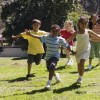 “Many parents are concerned about rising rates of childhood obesity. It’s important to keep a healthy perspective on the situation and not overreact with overly restrictive approaches that can do more harm than good. One way to promote healthy weights in children is to help them to be physically active.” This 2-page Family Album Radio transcript was written by Linda Bobroff, and published by the UF Department of Family Youth and Community Sciences, September 2012.
“Many parents are concerned about rising rates of childhood obesity. It’s important to keep a healthy perspective on the situation and not overreact with overly restrictive approaches that can do more harm than good. One way to promote healthy weights in children is to help them to be physically active.” This 2-page Family Album Radio transcript was written by Linda Bobroff, and published by the UF Department of Family Youth and Community Sciences, September 2012.
http://edis.ifas.ufl.edu/fm252
Bone Health (FAR8039/FM254)
 “When planning your family meals, you probably try to make sure your children get enough calcium and vitamin D, perhaps including a fresh cup of milk. Since milk is full of calcium, vitamin D, and other important nutrients, it’s one of the best foods for building strong bones. People who don’t get enough calcium or vitamin D are at risk for osteoporosis: weak bones that are more likely to fracture.” This 2-page Family Album Radio transcript was written by Jacob Young and Jennifer Hillan, and published by the UF Department of Family Youth and Community Sciences, September 2012.
“When planning your family meals, you probably try to make sure your children get enough calcium and vitamin D, perhaps including a fresh cup of milk. Since milk is full of calcium, vitamin D, and other important nutrients, it’s one of the best foods for building strong bones. People who don’t get enough calcium or vitamin D are at risk for osteoporosis: weak bones that are more likely to fracture.” This 2-page Family Album Radio transcript was written by Jacob Young and Jennifer Hillan, and published by the UF Department of Family Youth and Community Sciences, September 2012.
http://edis.ifas.ufl.edu/fm254
Improving Health and Happiness in the Home by Being an Energy Giver Rather Than an Energy Taker (FCS3313/FY1339)
 One way to improve health and happiness in the home is to work toward becoming an energy giver rather than an energy taker. The first step in doing this is to accept that you have some control regarding the attitude you choose to display during your waking hours. This 3-page fact sheet was written by Randall A. Cantrell and Victor W. Harris, and published by the UF Department of Family Youth and Community Sciences, October 2012.
One way to improve health and happiness in the home is to work toward becoming an energy giver rather than an energy taker. The first step in doing this is to accept that you have some control regarding the attitude you choose to display during your waking hours. This 3-page fact sheet was written by Randall A. Cantrell and Victor W. Harris, and published by the UF Department of Family Youth and Community Sciences, October 2012.
http://edis.ifas.ufl.edu/fy1339
Healthy Eating: Fluids (FCS8569/FY070)
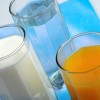 More than one-half of an adult human body weight is water. Water brings nutrients to the cells in our bodies and removes waste. Our bodies cannot function without an adequate water supply. This 2-page fact sheet was written by Linda B. Bobroff, Luisa Oliver-Cordero, and Emily Minton, and published by the UF Department of Family Youth and Community Sciences, 10. http://edis.ifas.ufl.edu/fy070
More than one-half of an adult human body weight is water. Water brings nutrients to the cells in our bodies and removes waste. Our bodies cannot function without an adequate water supply. This 2-page fact sheet was written by Linda B. Bobroff, Luisa Oliver-Cordero, and Emily Minton, and published by the UF Department of Family Youth and Community Sciences, 10. http://edis.ifas.ufl.edu/fy070
Alimentacion Saludable: Liquidos (FCS8569Span/FY071)
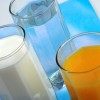 Más de la mitad del peso del cuerpo humano adulto, es agua. El agua transporta nutrientes a las células en nuestros cuerpos y remueve los residuos. Nuestros cuerpos no podrían funcionar sin una fuente de agua adecuada. This 2-page fact sheet was written by Linda B. Bobroff, Luisa Oliver-Cordero, y Emily Minton, and published by the UF Department of Family Youth and Community Sciences, October 2012.
Más de la mitad del peso del cuerpo humano adulto, es agua. El agua transporta nutrientes a las células en nuestros cuerpos y remueve los residuos. Nuestros cuerpos no podrían funcionar sin una fuente de agua adecuada. This 2-page fact sheet was written by Linda B. Bobroff, Luisa Oliver-Cordero, y Emily Minton, and published by the UF Department of Family Youth and Community Sciences, October 2012.
http://edis.ifas.ufl.edu/fy071
High Blood Pressure: What You Need to Know (FCS8638/FY199)
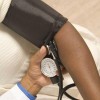 High blood pressure, also called hypertension, increases your health risks. If you have high blood pressure, you have a higher chance of getting heart disease or kidney disease or of having a stroke. This 4-page fact sheet was written by Linda B. Bobroff, and published by the UF Department of Family Youth and Community Sciences, October 2012.
High blood pressure, also called hypertension, increases your health risks. If you have high blood pressure, you have a higher chance of getting heart disease or kidney disease or of having a stroke. This 4-page fact sheet was written by Linda B. Bobroff, and published by the UF Department of Family Youth and Community Sciences, October 2012.
http://edis.ifas.ufl.edu/fy199
Sleep Needs for Children (FAR0604/FM181)
 “Does your school-aged child complain about being sleepy during the day, doze off in class, or yawn a lot? Does he or she go to bed late or have trouble falling asleep? If so, your child may not be getting enough sleep.” This 2-page Family Album Radio transcript was written by Suzanna Smith, and published by the UF Department of Family Youth and Community Sciences, October 2012.
“Does your school-aged child complain about being sleepy during the day, doze off in class, or yawn a lot? Does he or she go to bed late or have trouble falling asleep? If so, your child may not be getting enough sleep.” This 2-page Family Album Radio transcript was written by Suzanna Smith, and published by the UF Department of Family Youth and Community Sciences, October 2012.
http://edis.ifas.ufl.edu/fm181
Cutting Costs to Live Within Your Income (FCS7009/HE153)
 Developing self-control of your spending is a basic step in cutting the cost of living. Some families are able to afford what they want, even on a limited income. This may result from having more experience or greater skills. You probably know specific things you could do to reduce spending. These suggestions may work for you. This 3-page fact sheet was written by Josephine Turner, Michael S. Gutter, and Nayda I. Torres, and published by the UF Department of Family Youth and Community Sciences, October 2012.
Developing self-control of your spending is a basic step in cutting the cost of living. Some families are able to afford what they want, even on a limited income. This may result from having more experience or greater skills. You probably know specific things you could do to reduce spending. These suggestions may work for you. This 3-page fact sheet was written by Josephine Turner, Michael S. Gutter, and Nayda I. Torres, and published by the UF Department of Family Youth and Community Sciences, October 2012.
http://edis.ifas.ufl.edu/he153
Are You Marrying Someone from a Different Culture or Religion? (FCS2321/FY1337)
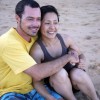 It was the author Paul Sweeney who penned, “A wedding anniversary is the celebration of love, trust, partnership, tolerance, and tenacity. The order varies for any given year.” Couples must make many adjustments as they learn to live with each other from year to year. When those adjustments include negotiating culture or religion, it adds another dimension to the process of trying to strengthen the relationship. This 7-page fact sheet was written by Stephanie C. Toelle and Victor W. Harris, and published by the UF Department of Family Youth and Community Sciences, September 2012.
It was the author Paul Sweeney who penned, “A wedding anniversary is the celebration of love, trust, partnership, tolerance, and tenacity. The order varies for any given year.” Couples must make many adjustments as they learn to live with each other from year to year. When those adjustments include negotiating culture or religion, it adds another dimension to the process of trying to strengthen the relationship. This 7-page fact sheet was written by Stephanie C. Toelle and Victor W. Harris, and published by the UF Department of Family Youth and Community Sciences, September 2012.
http://edis.ifas.ufl.edu/fy1337
Salmonella and Pathogenic E. coli in the Crop Production Environment: Potential Sources, Survival, and Management (SL375/SS576)
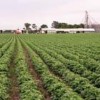 Over the last two decades, at least a dozen major outbreaks of gastroenteritis caused by non-typhoidal Salmonella or enterovirulent E. coli have been linked to the consumption of sprouts, nuts, and fresh (or minimally processed) fruits and vegetables. These outbreaks caught scientists and the public off guard because these pathogens were not previously considered “plant-associated.” This 3-page fact sheet highlights recent discoveries that focus on the ecology of human pathogens in the crop production environment. A better understanding of how pathogens persist outside of animal hosts in agricultural water, soils, and plants will have major impacts on managing produce safety from “farm to fork.” Written by Max Teplitski, Andree George, and George Hochmuth, and published by the UF Department of Soil and Water Science, October 2012.
Over the last two decades, at least a dozen major outbreaks of gastroenteritis caused by non-typhoidal Salmonella or enterovirulent E. coli have been linked to the consumption of sprouts, nuts, and fresh (or minimally processed) fruits and vegetables. These outbreaks caught scientists and the public off guard because these pathogens were not previously considered “plant-associated.” This 3-page fact sheet highlights recent discoveries that focus on the ecology of human pathogens in the crop production environment. A better understanding of how pathogens persist outside of animal hosts in agricultural water, soils, and plants will have major impacts on managing produce safety from “farm to fork.” Written by Max Teplitski, Andree George, and George Hochmuth, and published by the UF Department of Soil and Water Science, October 2012.
http://edis.ifas.ufl.edu/ss576
Landscaping in Florida with Fire in Mind (FOR71/FR076)
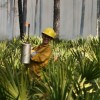 Fire is a powerful part of Florida’s landscape. It can maintain healthy natural ecosystems (Figure 1), but can also turn a home to ashes. Florida’s frequent lightning strikes and human carelessness guarantee that wildfire will continue to be a factor in both rural and suburban areas. Some homeowners may wonder if they are in danger of wildfire. Find out if you are at risk, and follow these guidelines to reduce the threat of wildfire. This 4-page fact sheet was written by Martha Monroe, Alan Long, and published by the UF Department of School of Forest Resources and Conservation, September 2012.
Fire is a powerful part of Florida’s landscape. It can maintain healthy natural ecosystems (Figure 1), but can also turn a home to ashes. Florida’s frequent lightning strikes and human carelessness guarantee that wildfire will continue to be a factor in both rural and suburban areas. Some homeowners may wonder if they are in danger of wildfire. Find out if you are at risk, and follow these guidelines to reduce the threat of wildfire. This 4-page fact sheet was written by Martha Monroe, Alan Long, and published by the UF Department of School of Forest Resources and Conservation, September 2012.
http://edis.ifas.ufl.edu/fr076
Pesticide Safety Miniposter: Daily Personal Care (ENY917/IN956)
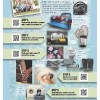 Anyone applying pesticides should be aware of the importance of preventing pesticide exposure to themselves, their families, and their pets by following a few personal care procedures each day. The information and video links (QR codes) on the Daily Personal Care poster provide technicians with examples of areas that are commonly contaminated by pesticides. The poster explains methods for the decontamination of vehicles, application equipment, personal items like cell phones, and clothing. Designed by R.W. Baldwin, S.K. Hill, Philip Koehler, W. Walker, and J.C. Medley, and published by the UF Department of Entomology and Nematology, August 2012.
Anyone applying pesticides should be aware of the importance of preventing pesticide exposure to themselves, their families, and their pets by following a few personal care procedures each day. The information and video links (QR codes) on the Daily Personal Care poster provide technicians with examples of areas that are commonly contaminated by pesticides. The poster explains methods for the decontamination of vehicles, application equipment, personal items like cell phones, and clothing. Designed by R.W. Baldwin, S.K. Hill, Philip Koehler, W. Walker, and J.C. Medley, and published by the UF Department of Entomology and Nematology, August 2012.
http://edis.ifas.ufl.edu/in956